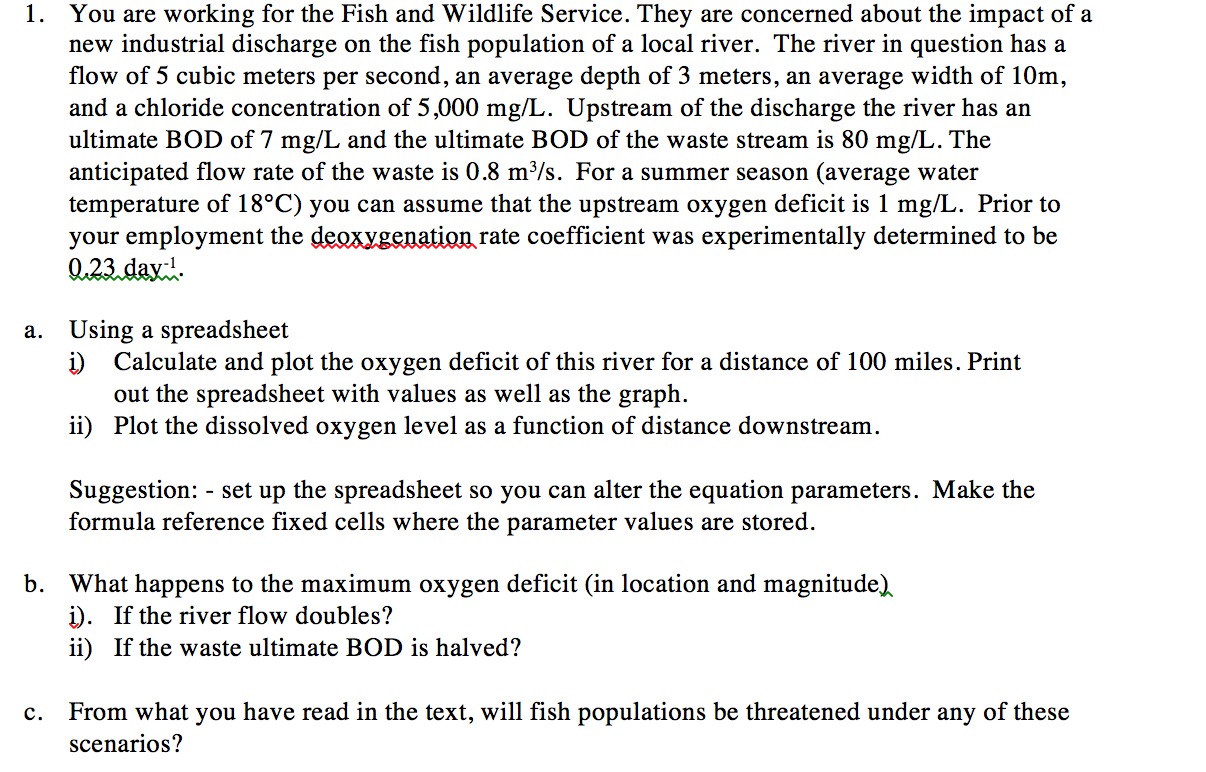Answered step by step
Verified Expert Solution
Question
1 Approved Answer
1. You are working for the Fish and Wildlife Service. They are concerned about the impact of a new industrial discharge on the fish

1. You are working for the Fish and Wildlife Service. They are concerned about the impact of a new industrial discharge on the fish population of a local river. The river in question has a flow of 5 cubic meters per second, an average depth of 3 meters, an average width of 10m, and a chloride concentration of 5,000 mg/L. Upstream of the discharge the river has an ultimate BOD of 7 mg/L and the ultimate BOD of the waste stream is 80 mg/L. The anticipated flow rate of the waste is 0.8 m/s. For a summer season (average water temperature of 18C) you can assume that the upstream oxygen deficit is 1 mg/L. Prior to your employment the deoxygenation rate coefficient was experimentally determined to be Q.23 day. a. Using a spreadsheet i) Calculate and plot the oxygen deficit of this river for a distance of 100 miles. Print out the spreadsheet with values as well as the graph. ii) Plot the dissolved oxygen level as a function of distance downstream. Suggestion: - set up the spreadsheet so you can alter the equation parameters. Make the formula reference fixed cells where the parameter values are stored. b. What happens to the maximum oxygen deficit (in location and magnitude) i). If the river flow doubles? ii) If the waste ultimate BOD is halved? c. From what you have read in the text, will fish populations be threatened under any of these scenarios?
Step by Step Solution
★★★★★
3.34 Rating (157 Votes )
There are 3 Steps involved in it
Step: 1
a i The oxygen deficit of this river can be calculated by using the deoxygenation rate coefficient 223 dax1 and the parameters listed above Using a sp...
Get Instant Access to Expert-Tailored Solutions
See step-by-step solutions with expert insights and AI powered tools for academic success
Step: 2

Step: 3

Ace Your Homework with AI
Get the answers you need in no time with our AI-driven, step-by-step assistance
Get Started


